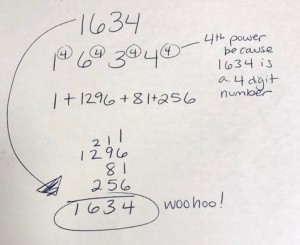
Taken from NASA.gov: One of the reasons that ancient peoples could not predict total solar eclipses was because they did not appreciate the mathematics involved in forecasting. Also, many of the parameters needed to accurately predict eclipses had not been astronomically measured until the first century CE.
Spark your math thinking!
- Set up your math mini spark recording page: #35: The Math Behind the Solar Eclipse
- Go to this site to read about eclipses. Then click the arrows to go through the quick facts. Record several details.
- Watch this video, The Coincidental Geometry of a Total Solar Eclipse, to learn more about the math involved. Take notes while watching.
4. Read and take notes about total solar eclipses at National Geographic Kids.
5. *Advanced: Take the NASA Challenge X Marks the Spot Linear Equations. Print out the activity sheets to get started.
6. *Advanced: Take the NASA Challenge Exploring Angular Diameter.
7. Share your math mini spark recording page with your teacher/EY coordinator.
 Where is your favorite place to eat pizza? My Top 3 are Sortinos, Mama’s Pizza, and Papa Johns. Of course whenever we eat pizza as a family, we have to make up some math problems! Explore some “pizza math”!
Where is your favorite place to eat pizza? My Top 3 are Sortinos, Mama’s Pizza, and Papa Johns. Of course whenever we eat pizza as a family, we have to make up some math problems! Explore some “pizza math”!
 A
A 

 Whether you’re a football fan or not, it’s interesting to look at the history of the Super Bowl. This math mni spark has you predicting, collecting, and displaying some data related to the Super Bowl.
Whether you’re a football fan or not, it’s interesting to look at the history of the Super Bowl. This math mni spark has you predicting, collecting, and displaying some data related to the Super Bowl.





 A fractal is a never-ending pattern. Fractals are infinitely complex patterns that are self-similar across different scales. They are created by repeating a simple process over and over in an ongoing feedback loop.
A fractal is a never-ending pattern. Fractals are infinitely complex patterns that are self-similar across different scales. They are created by repeating a simple process over and over in an ongoing feedback loop. Let it Snow, Let it Snow, Let it Snow! Explore this math mini spark to learn more about the snowflakes.
Let it Snow, Let it Snow, Let it Snow! Explore this math mini spark to learn more about the snowflakes.  Perplexors are logic puzzles that can help improve deduction reasoning skills. They are available in different levels. By using the “cross-out-and-circle” technique, you will practice logical thinking in order to find the correct answer. This math mini spark is brought to you by Hailey K. from Rockbrook.
Perplexors are logic puzzles that can help improve deduction reasoning skills. They are available in different levels. By using the “cross-out-and-circle” technique, you will practice logical thinking in order to find the correct answer. This math mini spark is brought to you by Hailey K. from Rockbrook.
 I love everything about fall…football, leaves changing colors, pumpkins, candy corn, and costumes! This math mini spark has a variety of activities to choose from.
I love everything about fall…football, leaves changing colors, pumpkins, candy corn, and costumes! This math mini spark has a variety of activities to choose from.